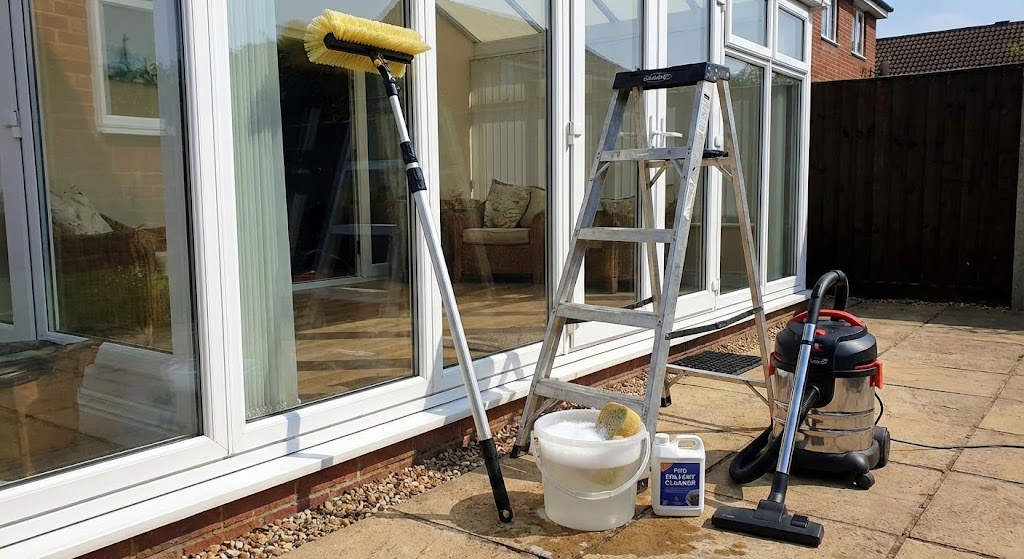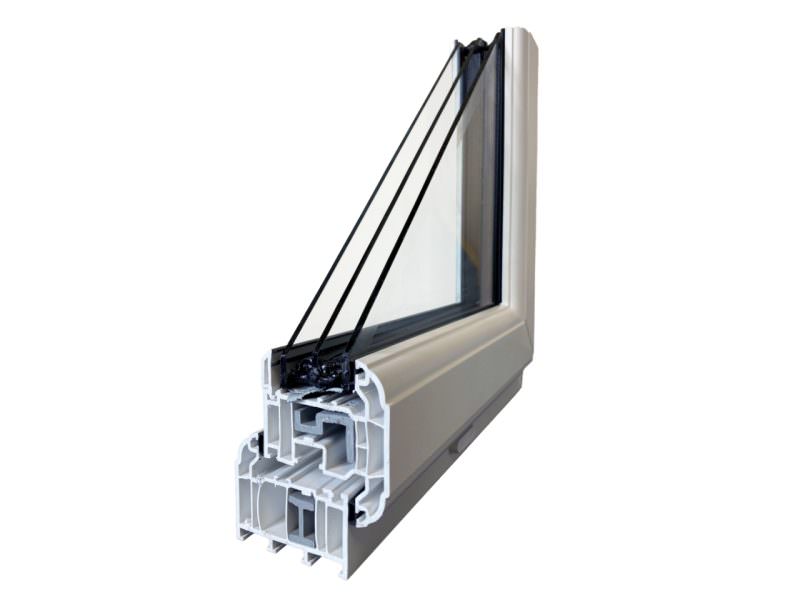
Timber - PVC - Aluminium - Windows, Doors & Conservatories in Hampshire
How to clean a Conservatory
How to clean a Conservatory
📌 Key Takeaways: How to Clean a Conservatory
- Safety First: Never stand on a conservatory roof. Use a telescopic extending brush and a secure ladder.
- The Golden Rule: Avoid pressure washers (jet washers) on seals, as they can damage waterproofing and lead to leaks.
- Best Solution: Warm soapy water is often best. Avoid abrasive cleaners on self-cleaning glass.
- Frequency: Aim to clean the roof and gutters at least twice a year (Spring and Autumn) to prevent algae buildup.
⚠️ Is your conservatory too far gone?
Cleaning is essential, but sometimes the structure is just too old or the brickwork is failing. If you aren’t sure if your conservatory is safe to clean or refurbish, read our decision guide first:
A conservatory is a beautiful addition to any home, but its beauty relies heavily on clarity. Over time, moss, algae, and general grime can turn your bright sanctuary into a dull, green-tinted space.
Cleaning a conservatory isn’t just about aesthetics; it’s about maintenance. Blocked gutters can cause leaks, and algae buildup can degrade seals. However, cleaning it incorrectly can cause significant damage.
In this guide, we break down the professional approach to cleaning your conservatory roof, windows, and interior safely and effectively.
Table of Contents
1. Preparation & Safety Warnings
Before you fill a bucket, we must address the most critical aspect of conservatory maintenance: Safety.
Unlike standard extensions, conservatory roofs are not designed to bear the weight of a person. Do not stand, walk, or crawl on your conservatory roof. Even if it looks sturdy, the risk of slipping or cracking a panel is high.
If you cannot reach the entire roof from a ladder with an extending brush, we strongly recommend hiring a professional cleaning company with the appropriate reach-and-wash systems.
2. Essential Equipment List
To clean your conservatory effectively without causing damage, avoid harsh chemicals and high-pressure jets. Here is what you need:

- Telescopic Water-Fed Pole / Soft Brush: Essential for reaching the finial and roof panels without climbing.
- Sturdy Step Ladder: Ensure it is placed on even ground.
- Warm Soapy Water: Standard washing-up liquid is usually sufficient.
- PVC Solvent Cleaner (Optional): For stubborn stains on white uPVC frames (do not use on foiled/coloured frames without testing).
- Vacuum Cleaner: With a crevice tool for the inside tracks.
3. How to Clean a Conservatory Roof
The roof is the hardest part to clean but the most important. The cleaning method must change depending on your glass type to avoid permanent damage.
Know Your Roof Material
Vulnerability
Soft plastic; susceptible to scratches and UV degradation.
Best Method
High-volume water; very soft brush; mild detergent.
⛔ Forbidden
Scouring pads, solvent cleaners (benzene/petrol), walking on panels.
Vulnerability
Hard surface; prone to streaks; heavy load on frames.
Best Method
Squeegee finish; Traffic Film Remover (TFR) for frames.
⛔ Forbidden
Abrasive pastes on dry glass (causes scratches).
Vulnerability
Has a microscopic coating that breaks down dirt via UV.
Best Method
Rinse with water only. For stubborn stains, use warm soapy water and soft cloth.
⛔ Forbidden
Squeegees (damage coating), abrasive cleaners, silicone.
Step 1: Rinse Down
Start by using a hose (on a gentle spray setting) to wet the roof. This helps loosen dry dirt, moss, and bird droppings.
Step 2: Scrub with Warm Soapy Water
Using your extendable brush, apply warm soapy water. Work from the top (the finial) downwards to the gutters. If you have stubborn green algae on the PVC finials, a little extra soak time works wonders.
Step 3: The Final Rinse
Rinse the soap off with clean water immediately. If soap dries on the glass, it will leave streaks. For the best finish, use purified water if available, or simply squeegee off the excess.
4. Clearing the Gutters
Conservatory gutters are often smaller than house gutters and block easily. A blocked gutter can cause water to back up and ingress into the conservatory leaks.
- Scoop by hand: Wearing gloves, safely use a ladder to scoop out leaves and moss.
- Check the downpipe: Ensure water flows freely. If blocked, a flexible drain rod or a hose can clear the obstruction.
- Wipe the outside: Once the inside is clear, wipe the external gutter casing with your soapy water to restore its shine.
5. Cleaning the Interior
Once the outside is sparkling, turn your attention inside.
The Frames: Wipe down uPVC frames with warm soapy water. For stubborn marks on white uPVC, a specific solvent cleaner can be used, but use sparingly. Avoid solvent cleaners on woodgrain or coloured foils as it may lift the colour.
The Locks and Hinges: Open your windows and doors. Use a vacuum to remove dust and dead flies from the rebate. Lubricate the moving metal parts with a light machine oil (like 3-in-1), but avoid greasing the window tracks themselves as this attracts dirt.
📚 Related Maintenance Guides
- Fix Problems: How to Stop Condensation on Windows – Essential reading if you see moisture.
- Fix Problems: Cleaning white spots on glass – How to easily remove them.
- Fix Problems: Cleaning uPVC Windows – Essential tips on keeping them clean.
- Smooth Operation: Comprehensive Window & Door Repair Guide – Top tips.
- Upgrade: The Complete Refurbishment Guide – If cleaning isn’t enough, explore your options.
6. Frequently Asked Questions
No. Conservatory roofs, whether glass or polycarbonate, are not designed to support human weight. Walking on them is dangerous and can lead to falls or structural damage. Always use crawl boards if access is strictly necessary, but we recommend using telescopic tools from a ladder or hiring a professional.
We generally advise against using high-pressure jet washers. While they are great for patios, the high pressure can damage the delicate rubber seals and waterproofing on a conservatory, leading to leaks. A garden hose with a spray attachment is safer and sufficient.
Self-cleaning glass has a special coating. To clean it, simply hose it down with water. For stubborn marks, use warm soapy water and a soft cloth. Never use abrasive pads, solvent cleaners, or harsh chemicals, as these will permanently damage the self-cleaning layer.
We recommend a deep clean of the roof and gutters twice a year: once in Spring to clear winter debris, and once in Autumn to clear falling leaves. Regular maintenance prevents algae from staining the PVC and keeps seals functioning correctly.
- 2026 Design Trends: The 4 Window & Door Styles Defining the Year - 19 December 2025
- The 2026 Glazing Outlook” – High-level summary of the pivot to growth. - 9 December 2025
- Industry News: The Future Homes Standard 2025 & What It Means for Your Windows - 1 December 2025














